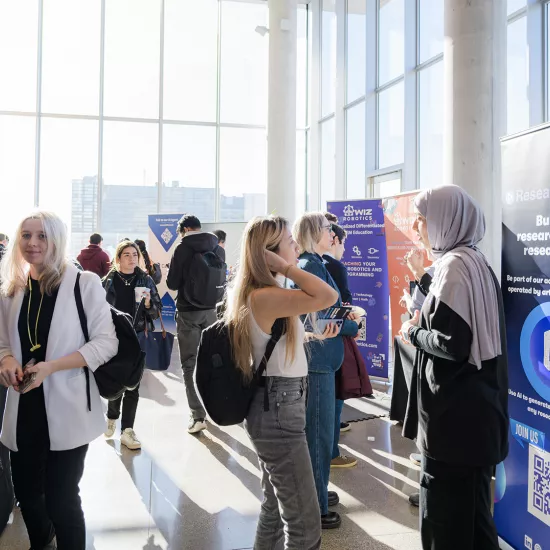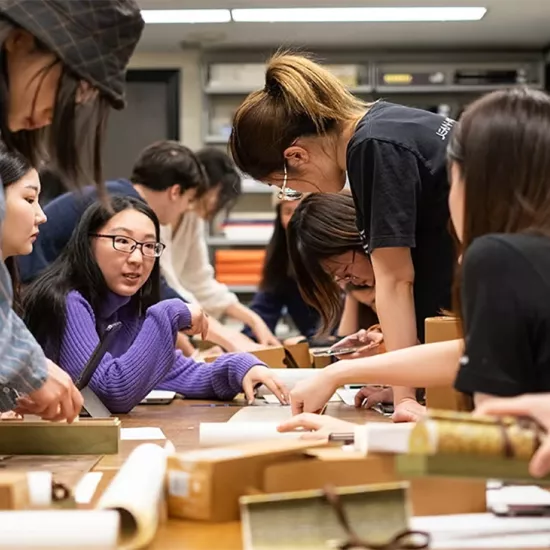'Slow Anti-Americanism': A Q&A with political science Prof. Edward Schatz

Associate professor Edward Schatz’s new book looks at the symbolic, and often remote, influence of the U.S. in Central Asia, and explores the growth of what he coins ‘slow anti-Americanism’ amongst the region’s social movements.
Slow Anti-Americanism: Social movements and symbolic politics in Central Asia was published in January 2021 by Stanford University Press.
Felicity Heyworth, with the Munk School of Global Affairs and Public Policy, spoke to Schatz about his book.
What is slow anti-Americanism, and why is its presence in Central Asia significant?
Slow Anti-Americanism is the name I give to gradual and at times imperceptible changes to the U.S.’s image. The phrase anti-Americanism can conjure up images of burning flags and fiery dictators ideologically opposed to the United States. The reality can be much more mundane, as popular attitudes about the U.S. are linked to what “America” as a symbol represents and how those representations shift over time.
In Central Asia—and I suspect Central Asia is not unique in this way—slow anti-Americanism matters because it shifts the symbolic raw material available to social mobilizers. So, in the book, I trace how Islamist, human rights, and labour movements engage with the United States as a symbol as they pursue their respective agendas.
Your book focuses on the Islamic, human rights and labour movements in Central Asia, and how they interact with slow anti-Americanism. Are these movements strong in the region, and how does slow anti-Americanism fuel them?
Central Asia today is largely politically authoritarian. And if there’s one thing we know about authoritarian contexts, it is that there’s much less “oxygen” for social movements like the ones I discuss in the book. That said, these movements have at various moments demonstrated real strength. One way we know they’re strong is that the authoritarian governments across the region struggle to contain their power.
In the book, I argue that those social movements that manage to harness the power of “symbolic America” can connect their agendas—which typically are local—to something broader. Any time that a movement can connect its efforts to the struggles of others around the globe, it is a powerful driver of recruitment.

It seems like global anti-Americanism – the active rather than the symbolic kind – is strong right now. Does it feel timely and important that we reflect on slow anti-Americanism at this juncture in America’s global image and reach?
Anti-Americanism has been around for decades, though it comes and goes from our collective attention from month to month and year to year. This has a lot to do with America’s global power; its great visibility invites critique. But in the book I argue that there’s something more: it is America’s claim to offer a universal model of polity and economy that makes it simply impossible to ignore. Some publics around the globe are inspired by aspects of that model. Others may be frustrated or angered by it. But it is hard to pay it no heed.
But I think you’re right. We are at a moment when reflecting on anti-Americanism makes good sense. How has the U.S. image changed under the unorthodox and I’d say deeply damaging policies of the Trump Administration? How have global publics—everyone from businesspeople to students to diplomats to social and political actors—shifted in their thinking about the U.S.? What representations of the U.S. are most resonant now?
The implications of the book are that choices made by the Trump Administration may have accelerated some processes already underway, but the key takeaway is that slow anti-Americanism is a gradual process that easily predates 2016. If we want to understand what’s happening now, we need to take the long view.
Do you expect to see any significant changes in U.S. policies in, and relations with, Central Asia under the Biden administration? If yes, how might these influence slow anti-Americanism and the social movements you explore in the book?
We’ve already begun to see a dramatic change in tone from the Biden administration. The language used is one of multilateralism, of global engagement, of being a reliable partner. Its policies are likely to be less mercurial and isolationist than what we’ve recently experienced.
That said, what “America” represents in Central Asia will not turn on a dime. The meanings attributed to the U.S. as a symbol—what in the book I call its sedimented meanings—are the product of several decades of slow-moving processes. If the Biden Administration pays serious attention to issues of soft power and public diplomacy, it could begin changing some of these social meanings, but if this is to succeed, we will only see the dividends many years from now.

I think that being an insider-outsider means that you become more clearly aware of the taken-for-granteds. From that vantage-point, it is just easier to—as the anthropologists say—make the familiar strange and make the strange familiar. I try to turn that into an advantage when I do my research.
As for what I admire and what frustrates me … I admire the United States when it stands for human rights, but I am frustrated by it when it fails to make good on these principles. I admire the United States when it provides exceptional opportunity for mold-breaking entrepreneurship, but it frustrates me when socio-economic inequality and pervasive racism make this opportunity available only to some. I admire the United States for its historical leadership, but I am frustrated when its claim to being exceptional blinds it to the rest of the world.
What first brought you to the countries of Central Asia, either in-person or as a topic of research? What do you love about the region, and what makes it so interesting as a lens on the U.S. and other global powers?
I majored in something called Soviet and East European Studies as an undergraduate. When I graduated—and I assure you there is no connection here—the Soviet Union collapsed. All of the sudden, people like me could learn more about and travel to parts of the former USSR that had been hard to access. So, while I had studied and worked in Moscow and St. Petersburg, now I could go to places like Shymkent, Akmola, and Kyzylorda.
At first I took an interest in the region because of simple curiosity. Here were cultures and peoples far from the radar of Western scholarship and even further from the radar of Western media. But then I genuinely came to care about people on the ground whom I met. That continues to be my main motivation.
As for the U.S. image, I think Central Asia is particularly interesting because the U.S.’s material footprint—its economic presence, its diplomatic presence, its military presence—has been fairly light in the region. In the meantime, people do have a striking awareness of the United States, and so as a symbolic touchstone, the United States is strangely present. It was this combination—materially fairly absent and symbolically fairly present—that intrigued me.
In addition to serving as the Acting Director of the Centre for European, Russian, and Eurasian Studies, you are the co-director of the Munk School’s Belt & Road in Global Perspective initiative. Belt & Road is a global infrastructure project undertaken by the Chinese government, a main feature of which is proposed overland road and train routes through Central Asia. How does China’s active presence in the region differ from the largely symbolic one of the U.S., and how do these very different relationships with two super-powers influence the region?
China’s role differs in a few ways. First, it is a neighbour. Now, we know that neighbours can be friendly or not so friendly, but you are more likely to have fairly close interaction with your neighbours than with people on the other side of town. By contrast, the United States is a remote actor. So, the first difference is that China’s involvement in the region can seem more organic, whereas the U.S. involvement in the region can seem the product of a visible and concerted policy decision. Second, starting with Hu Jintao, China has proclaimed that its rise is “peaceful.” That may or may not be so, but underlying this is a claim that China does not seek to change the world according to its model. The rhetorical contrast with the U.S. couldn’t be starker, and it means that China as a symbol works differently than America as symbol.
But here’s the main thing: it is too early to know how China and its image will play itself out in the Central Asian context. If slow anti-Americanism is any indication, it will take a long time for China as a symbol to lodge itself in the Central Asian imagination.
Does slow anti-Americanism have a toehold amongst Canada’s population, social movements or politics?
My research doesn’t focus on Canada, so it is a bit hard to tell. That said, I think the book forces us to ask certain kinds of questions. We’d want to know what are the sources of shifting attitudes about the United States? Where are people getting their information from as they get inspired by or perhaps frustrated with what they take the U.S. to represent?
One thing to underscore here is that the flow of information is really a torrent. Or maybe a series of torrents. It is not just what, say, the Trump Administration does that matters to how Canadians view the United States. It also matters what Black Lives Matter does. It matters what AOC does. By the same token, it matters what far-right insurrectionists do.
All of this flows into Canadian space with great ease, constantly shifting not only how we feel about the United States but how we feel about ourselves and our own society’s possibilities.
You worked on this book for over 15 years. Are you sad to ‘say goodbye’? What’s next for this research and/or for any new research?
Since anti-Americanism is very likely to stick around in one form or another, I suspect that there will always be lots to talk about. Going forward, I’d like to focus directly on the impact that the Trump Administration had on America’s image. I also will do a deep dive into China’s role in the region, largely through the Belt and Road Initiative. I expect that it too will be both a source of inspiration and frustration for people on the ground. I promise to report back to you in a few years’ time.
Some answers have been edited for space.



